Introduction
For those battling fatty liver disease, dietary changes play a pivotal role in managing the condition and promoting overall liver health. In this comprehensive guide, we’ll delve into a 21 day fatty liver diet plan that aims to reduce fat accumulation in the liver and support its optimal function. By following this carefully crafted plan, you can embark on a journey towards improved liver health, enhanced well-being, and a balanced lifestyle.
Understanding Fatty Liver Disease
Before we dive into the specifics of the 21 day fatty liver diet plan, it’s essential to understand the underlying condition we’re addressing. Fatty liver disease, also known as non-alcoholic fatty liver disease (NAFLD), is a condition characterized by the excessive accumulation of fat in the liver cells. This condition can progress to more severe forms, such as non-alcoholic steatohepatitis (NASH), which can lead to scarring (cirrhosis) and potentially life-threatening complications.
Causes and Risk Factors
Several factors contribute to the development of fatty liver disease, including:
- Obesity: Being overweight or obese is a major risk factor.
- Insulin resistance: Impaired insulin function can lead to fat accumulation in the liver.
- High-calorie diet: Consuming excessive calories, particularly from unhealthy fats and refined carbohydrates, can increase the risk.
- Sedentary lifestyle: Lack of physical activity is associated with a higher likelihood of developing fatty liver disease.
- Metabolic syndrome: A cluster of conditions, including high blood pressure, high blood sugar, and abnormal cholesterol levels, increases the risk.
By addressing these factors through dietary and lifestyle modifications, you can effectively manage and potentially reverse fatty liver disease.
The 21-Day Fatty Liver Diet Plan
Our 21 day fatty liver diet plan is meticulously designed to provide a balanced and liver-friendly approach to eating. It emphasizes the consumption of nutrient-dense foods that support liver function while reducing the intake of harmful substances that can exacerbate the condition.
Week 1: Detoxification and Hydration
The first week of the plan focuses on detoxifying the body and promoting optimal hydration, which is crucial for liver health.
Table 1: Sample Meal Plan for Week 1
| Meal | Options |
| Breakfast | Overnight oats with mixed berries and almond milk – Avocado toast on whole-grain bread with a side of sautéed spinach |
| Lunch | Mixed green salad with grilled chicken, cherry tomatoes, and a lemon vinaigrette – Vegetable and lentil soup |
| Dinner | Baked salmon with roasted brussels sprouts and quinoa – Zucchini noodles with a tomato-basil sauce and grilled shrimp |
| Snacks | Fresh fruits like apples, oranges, and grapefruit – Unsalted nuts and seeds – Cucumber slices with hummus |
Week 2: Nutrient-Dense Foods
During the second week, we’ll introduce a wider variety of nutrient-dense foods, including whole grains, lean proteins, and an abundance of vegetables and fruits.
Table 2: Sample Meal Plan for Week 2
| Meal | Options |
| Breakfast | Greek yogurt with mixed berries and a sprinkle of chia seeds – Whole-grain toast with mashed avocado and a sunny-side-up egg |
| Lunch | Quinoa and black bean salad with roasted red peppers and a lime vinaigrette – Grilled chicken and vegetable skewers with a side of brown rice |
| Dinner | Baked cod with roasted sweet potatoes and steamed broccoli – Lentil and vegetable stir-fry with brown rice |
| Snacks | Apple slices with almond butter – Edamame – Carrots and celery sticks with hummus |
Week 3: Maintenance and Sustainability
The final week of the plan focuses on maintaining the healthy habits established in the previous weeks and ensuring long-term sustainability.
Table 3: Sample Meal Plan for Week 3
| Meal | Options |
| Breakfast | Chia seed pudding topped with fresh berries and sliced almonds – Vegetable and egg scramble with whole-wheat toast |
| Lunch | Grilled chicken and quinoa salad with mixed greens, tomatoes, and a balsamic vinaigrette – Vegetable and bean soup with a side of whole-grain crackers |
| Dinner | Grilled tuna with roasted asparagus and a side of brown rice – Vegetable and tofu stir-fry with quinoa |
| Snacks | Trail mix (nuts, seeds, and dried fruit) – Bell pepper strips with tzatziki dip – Fresh fruit smoothie with almond milk and spinach |

Foods to Embrace
To support liver health and aid in the management of fatty liver disease, it’s essential to incorporate nutrient-dense foods into your diet. Here are some foods to embrace:
Table 4: Liver-Friendly Foods
| Food Group | Examples |
| Lean Proteins | Chicken, turkey, fish (salmon, tuna, cod), legumes, tofu |
| Fruits and Vegetables | Leafy greens, berries, cruciferous vegetables, tomatoes, bell peppers, avocados |
| Whole Grains | Quinoa, brown rice, whole-wheat bread, oats |
| Healthy Fats | Olive oil, avocados, nuts, seeds |
| Beverages | Water, herbal teas, unsweetened plant-based milk alternatives |
These foods are rich in essential nutrients, antioxidants, and fiber, which can support liver function and promote overall health.
Foods to Avoid
While embracing nutrient-dense foods is crucial, it’s equally important to limit or avoid certain foods that can exacerbate fatty liver disease.
Table 5: Foods to Avoid or Limit
| Food Group | Examples |
| Processed and Fried Foods | Chips, fast food, fried snacks |
| Sugary Drinks and Sweets | Sodas, juices, candy, baked goods |
| Refined Carbohydrates | White bread, pasta, pastries |
| Saturated and Trans Fats | Butter, lard, margarine, fatty cuts of meat |
| Alcohol | Beer, wine, liquor |
These foods are often high in unhealthy fats, added sugars, and sodium, which can contribute to fat accumulation in the liver and exacerbate inflammation.
Lifestyle Modifications
In addition to following the 21 day fatty liver diet plan, it’s essential to incorporate lifestyle modifications to support liver health and overall well-being.
Regular Exercise
Regular physical activity is crucial for managing fatty liver disease. Aim for at least 150 minutes of moderate-intensity exercise or 75 minutes of vigorous-intensity exercise per week. Activities such as brisk walking, swimming, cycling, or jogging can be beneficial.
Stress Management
Chronic stress can contribute to inflammation and exacerbate liver problems. Incorporate stress-reducing activities like yoga, meditation, deep breathing exercises, or engaging in hobbies you enjoy.
Adequate Sleep
Getting enough quality sleep is essential for overall health and can support liver function. Aim for 7-9 hours of sleep each night and establish a consistent sleep routine.
Hydration
Drinking enough water is crucial for detoxification and supporting liver function. Aim to consume at least 8 cups (64 ounces) of water daily, and consider incorporating herbal teas as well.
Conclusion
Embarking on the 21 day fatty liver diet plan is a transformative step towards reclaiming your liver health and overall well-being. By committing to this comprehensive dietary approach, you’re not only addressing the underlying condition but also nurturing your body with nutrient-dense, liver-friendly foods that support optimal function.
Throughout this journey, you’ve learned the importance of embracing lean proteins, fiber-rich fruits and vegetables, whole grains, and healthy fats, while limiting your intake of processed, sugary, and fatty foods that can exacerbate fatty liver disease. The carefully curated meal plans and food recommendations have provided you with practical guidance to make informed choices and create delicious, liver-friendly meals.


